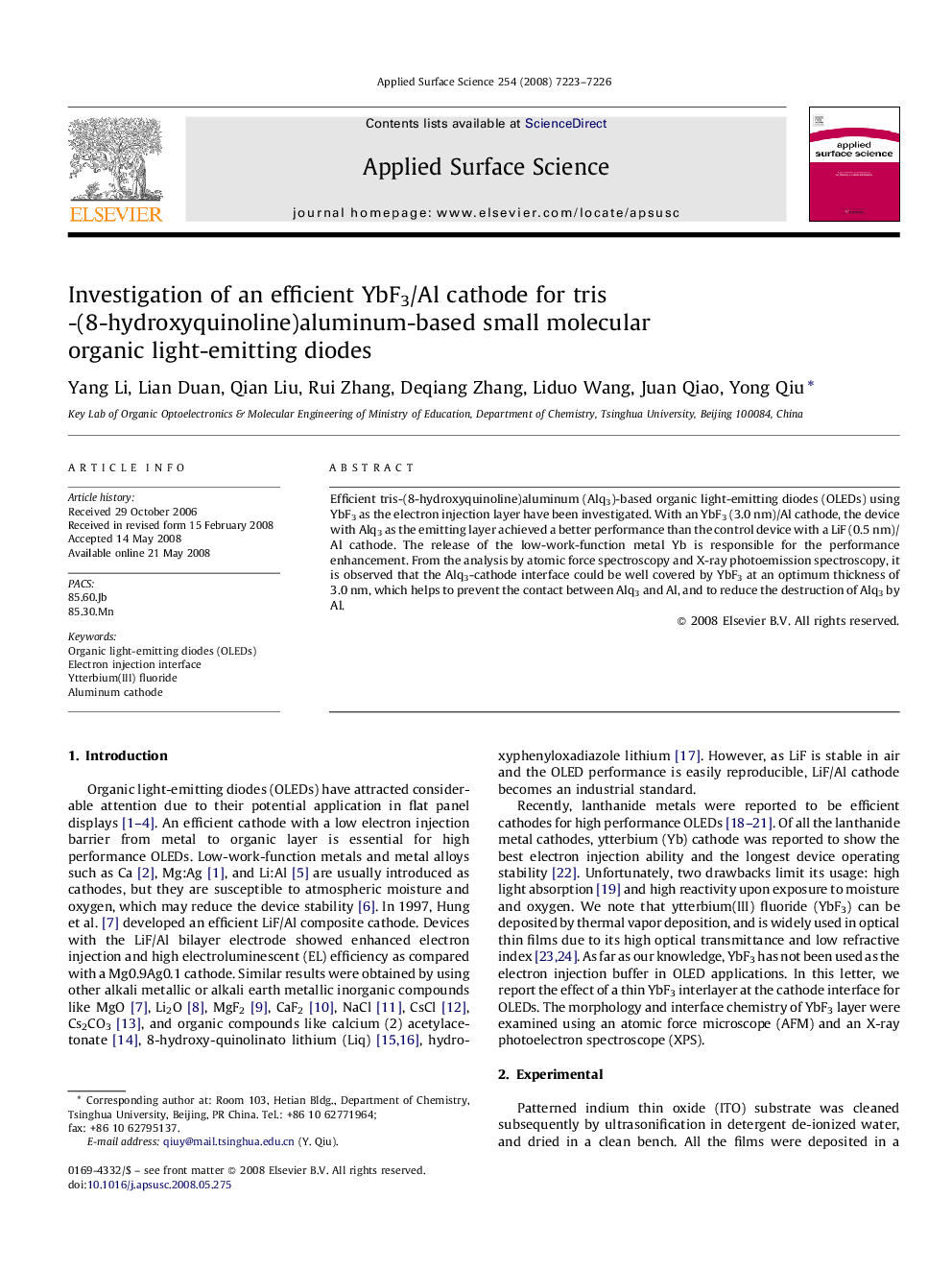| Article ID | Journal | Published Year | Pages | File Type |
|---|---|---|---|---|
| 5361071 | Applied Surface Science | 2008 | 4 Pages |
Abstract
Efficient tris-(8-hydroxyquinoline)aluminum (Alq3)-based organic light-emitting diodes (OLEDs) using YbF3 as the electron injection layer have been investigated. With an YbF3 (3.0Â nm)/Al cathode, the device with Alq3 as the emitting layer achieved a better performance than the control device with a LiF (0.5Â nm)/Al cathode. The release of the low-work-function metal Yb is responsible for the performance enhancement. From the analysis by atomic force spectroscopy and X-ray photoemission spectroscopy, it is observed that the Alq3-cathode interface could be well covered by YbF3 at an optimum thickness of 3.0Â nm, which helps to prevent the contact between Alq3 and Al, and to reduce the destruction of Alq3 by Al.
Related Topics
Physical Sciences and Engineering
Chemistry
Physical and Theoretical Chemistry
Authors
Yang Li, Lian Duan, Qian Liu, Rui Zhang, Deqiang Zhang, Liduo Wang, Juan Qiao, Yong Qiu,
